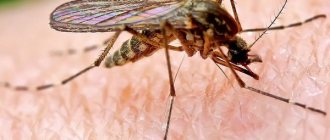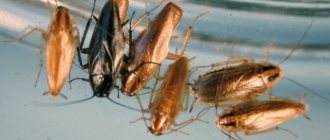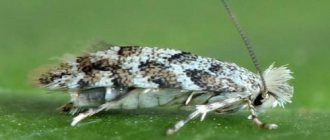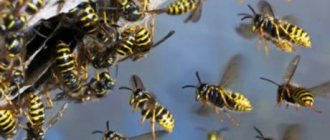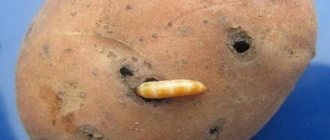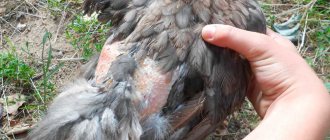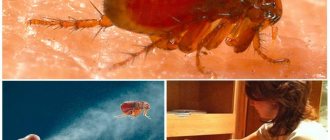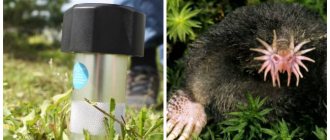It would seem that the meadow moth, in accordance with its name, should flutter on lawns and meadows. But no, the natural spaces do not attract him. The insect tries to stay close to agricultural lands and occupies plantations of sunflowers, sugar beets, legumes, cereals, vegetables, and melons. Polyphagous behavior, rapid reproduction, long-distance migrations and cyclical outbreaks of increased population growth place the meadow moth on the pedestal of the most dangerous and insidious pests of fields and vegetable gardens.
What does a meadow moth look like?
The meadow moth is a typical representative of the grass moth family. The habitat covers almost the entire forest-steppe zone of the post-Soviet space. The most favorable regions for development are those with a moderate, warm climate where precipitation is stable.
Appearance
The description of the meadow moth has much in common with its relatives:
- nondescript color of light brown or yellow shades;
- wingspan from 17 to 27 mm, when folded they have the shape of a triangle;
- the front wings are gray-brown with a yellow pattern;
- the darker hind wings are bordered by parallel stripes;
- forehead with a conical protrusion;
- thin thread-like antennae in females and serrated antennae in males.
Meadow moth butterflies exhibit pronounced sexual dimorphism. Females are larger than males and have a thick abdomen. In the latter, the body is thinner and longer; when you press on the abdomen, a brush of hair appears at the end, while in the female it looks like a fan.
The length of the eggs does not exceed 1 mm. Elongated shape. The color is yellowish with mother-of-pearl.
The hatched larva is transparent yellow or greenish in color. As they grow older, the color becomes more saturated and almost black. An adult meadow moth caterpillar grows up to 3.5 cm. Two stripes can be distinguished on the back, and elongated shiny lines on the sides. 8 pairs of legs provide the larva with good mobility.
The length of the pupa is 12 m. The color is light brown, becoming gray before the butterfly emerges. The cocoon is usually found in the soil and covered with lumps of dirt. On the top there is a special hole, slightly covered with cobwebs, from which a young moth will fly out.
Subtleties of life
In the photo, the meadow moth is the cutest creature, looking at which you wouldn’t even think that it is a malicious pest and a menace to farmers. In principle, it is not the butterfly itself that is harmful, but its offspring. But first things first. Insects overwinter in the caterpillar stage in a cocoon, which reliably protects them from the negative influences of the external environment.
On a note! Overwintering larvae are very resistant to low temperatures and retain their vital functions at minus 30°C. However, in the spring they become susceptible to even minor frosts, which can kill them.
Individuals that survive the winter pupate. The first generation of meadow moths begins to fly at the end of April. In the northern regions, the time of departure of butterflies is noted in early June. Insects are active during twilight and night hours. Daytime is spent in the grass, under leaves. Meadow moths are very shy. At the slightest rustle they show a feeling of anxiety and take off.
Females need food to reproduce. Nectar serves as their food source. But there is one more nuance that affects the development of the population. If during the life of the meadow moth caterpillar there was not enough liquid in the diet, then the female may be infertile or produce few offspring. Drought can provoke insects to migrate.
Meadow moths travel long distances in search of food or moisture. Such migrations are called active. But there are also passive migrations, when moths move through air masses. The migration capacity of butterflies reaches 300-900 km.
Reproduction nuances
Under the accompanying optimal conditions: availability of food, moisture, temperature from 20°C, sexually mature individuals begin to mate. As a rule, egg laying begins 5-7 days after the butterfly leaves the cocoon. The female places eggs on the inside of leaves, on weeds, stems, and less often on dry residue or soil, 5-20 eggs each, stacking them on top of each other, like tiles. The process of laying offspring lasts 1-2 weeks.
The fertility of a female meadow moth reaches 600 eggs and is determined by the quality of the caterpillar's diet. It has been noticed that, under the same meteorological conditions, those individuals that ate beets are more fertile.
At a temperature of 27°C and a humidity of 75%, embryonic development lasts from 2 to 15 days. In hot weather, when the thermometer is above 30°C and the humidity does not exceed 45%, almost half of the eggs die. The young larva of the first instar feeds on the tissues of leaves from the underside, forming peculiar “windows” on them.
Young individuals of the first instar do not touch cereal crops. If any caterpillar is tempted by corn, this will lead to its death. Older individuals, starting from the third instar, consume grains without harm to their health and these crops no longer pose a threat to their life.
Adult caterpillars unceremoniously eat various crops, the list of which includes 200 different types of vegetation. After their invasion, skeletonized leaves with visible veins and entwined with cobwebs remain. During mass invasions, cuttings are also eaten. Roots, shoots, and fruits are damaged.
The development and life of the meadow moth caterpillar depends on many factors. For larvae of the first instars, moisture is very important; at older ages, the need for nutrition increases. The larvae are distinguished by their mobility. In search of food, they easily overcome 50 meters; in forced situations, they migrate to longer distances.
The feeding of the larvae lasts about 15-30 days. After which they burrow into the ground, weave a cocoon and pupate. After 14-0 days, new butterflies appear, ready to mate and increase the population size. From 1 to 4 generations are possible per year. The larvae of the last generation go to the ground for the winter.
meadow moth
This article provides basic information on how to deal with meadow borer and what it is, as well as why it is dangerous to people and plants.
Meadow moth description and why it is dangerous, type of pupa and larva, what damages, class, order and family
The meadow moth is a butterfly with grayish-brown wings that belongs to the class of insects, the order Lepidoptera and the grass moth family.
The length of the meadow moth is -10-12 mm, the wingspan is 18-26 mm. Females are larger than males. The fertility of one butterfly is 20-600 eggs in 7-15 days. The appearance of caterpillars from laid eggs occurs already 2-7 days after laying.
The main danger to plants is the caterpillars. Their “menu” includes over 200 weeds and wild plants, not to mention sugar beets, sunflowers, peas, corn, legumes, potatoes and other vegetable plants grown by humans.
A mature caterpillar burrows into the ground and pupates, weaving a cocoon 3-4 mm wide and 20-40 mm long. Meadow moth pupae reach a length of 8-12 mm and have 8 bristles at the end of the abdomen. The importance of the cocoon is to protect the caterpillar from frost and other unfavorable conditions. In the spring, when the air warms up above 10-15°C, a new meadow moth emerges from the open top of the cocoon onto the surface of the earth, beginning the next cycle of its development.
Meadow moth on mustard, cabbage, potatoes, corn, sunflower control measures
The meadow moth is omnivorous. Its caterpillars can be found on cabbage, potatoes, corn, sunflowers, mustard and even weeds.
One of the methods of combating this pest is deep loosening and plowing of the soil or hilling of plants. This measure causes the death of caterpillars while still in pupae, which, as is known, overwinter and develop shallowly in the soil.
Among the biological insecticides used to protect the area from the meadow moth, it is recommended to use the preparations Lepidocid and Bitoxibacillin.
Among the chemicals, Fufanon, Decis, Karbofos, Metaphos and Phosfamide are recognized as more effective.
Meadow moth on beets and soybeans what to do
One of the preparations for combating meadow borer on beets and soybeans is Decis-Expert. The product is safe for pollinating insects, non-phytotoxic and has a minimal risk of washout. Decis-Expert acts already in the first hours of contact with the plant and is active for 2 weeks.
Fufanon, Zolon and Danadim Stable also have similar properties.
Meadow moth harmful stage and period of harmfulness, wintering place
The wintering site of the meadow moth is the soil. A mature caterpillar burrows into the ground and pupates, leaving a hole at the top through which in the spring, when the air warms up well enough, a moth will fly out.
The period of harmfulness from the meadow moth reaches its peak when the pest enters the caterpillar phase. The use of insecticides during the damaging stage is considered the most appropriate, since with minimal consumption of chemicals the pest population can be significantly reduced.
The threshold of harmfulness is determined by the minimum number of meadow moths at which the funds spent on pest control will be recouped from the income from the saved harvest.
Meadow moth caterpillar
Emerging from eggs laid by meadow moths, the caterpillar is transparent green in color and has a shiny black head. After some time, the body of the larva begins to darken, but the head remains the same. At the end of its development, namely after 10-30 days, the caterpillar begins to pupate. Its dimensions during this period can reach a length of 35 mm.
Add a comment Cancel reply
Maliciousness
During mass dispersal, harm is caused by both adults and caterpillars. Numerous flocks of meadow moths become competitors to honey bees, which is not something any beekeeper can be happy about. The amount of honey in the hives is significantly reduced.
Caterpillars of the first generation eat weeds along roadsides, in ravines, and in forest belts. The voracious larvae of the second generation of the meadow moth infect sunflower, alfalfa, buckwheat, sugar beets and other agricultural and forest crops. Depending on the number of pests, the crop can be reduced by 50%, or even completely destroyed.
On a note! The threshold of harmfulness of the meadow moth on sunflower is 10 caterpillars per 1 sq. m in the seedling phase up to 6 leaves. During the flowering period, the figure increases to 20 caterpillars per square meter. m. A similar threshold of harmfulness is typical for sugar beets. Only what is taken into account is not the flowering, but the closing of the leaves.
The larvae with an insatiable appetite destroy all vegetation in their path. In their gluttony they are not inferior to locusts. It is also noteworthy that, like the latter, the meadow moth is characterized by an outbreak of mass reproduction, which occurs cyclically with an interval of 10-12 years. It has not yet been possible to unravel the reasons for this phenomenon. It is possible that some of the main factors are climatic conditions, mass migrations of the meadow moth, and solar activity. Interestingly, the ability to migrate helps butterflies to avoid natural enemies and parasitic individuals.
The meadow moth is an omnivorous pest
This most dangerous pest prefers to settle in meadows, river valleys, abandoned areas and the sides of grassy roads. In a short time, it is capable of covering significant distances and literally mastering vast territories in just a few days. And although the meadow moth causes the greatest harm in steppe regions located from 45 to 55 degrees north latitude, the butterfly can suddenly appear where it has never been seen before.
As a rule, in this case, vegetable growers are not ready to give a worthy rebuff to this pest. But already with 5-6 moth caterpillars on each plant they promise a loss of up to 50% of the harvest! ... During the intensive breeding season, the offspring of this winged insect can completely destroy all plantings within a day.
You can easily find caterpillars if you place a piece of newspaper or white paper on the ground under the affected plant and shake it a little - the pest will descend on a cobweb.
The diet of the meadow moth includes about 200 plant species, 30 of which are cultivated.
In home gardens, it most often attacks beets, carrots, peas, beans, melons and sunflowers. Cabbage suffers from it quite rarely, but the pest usually avoids tomatoes.


